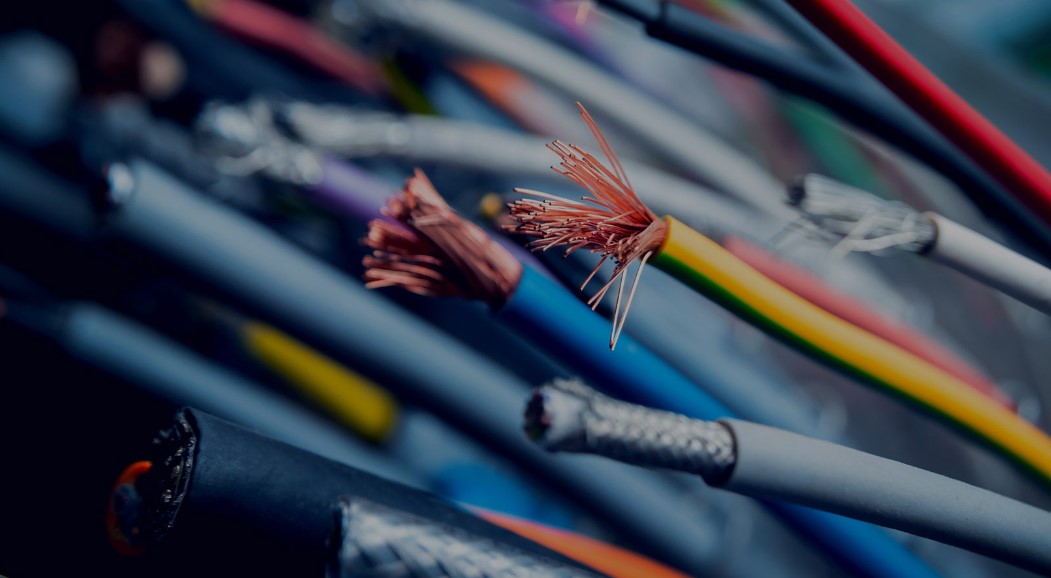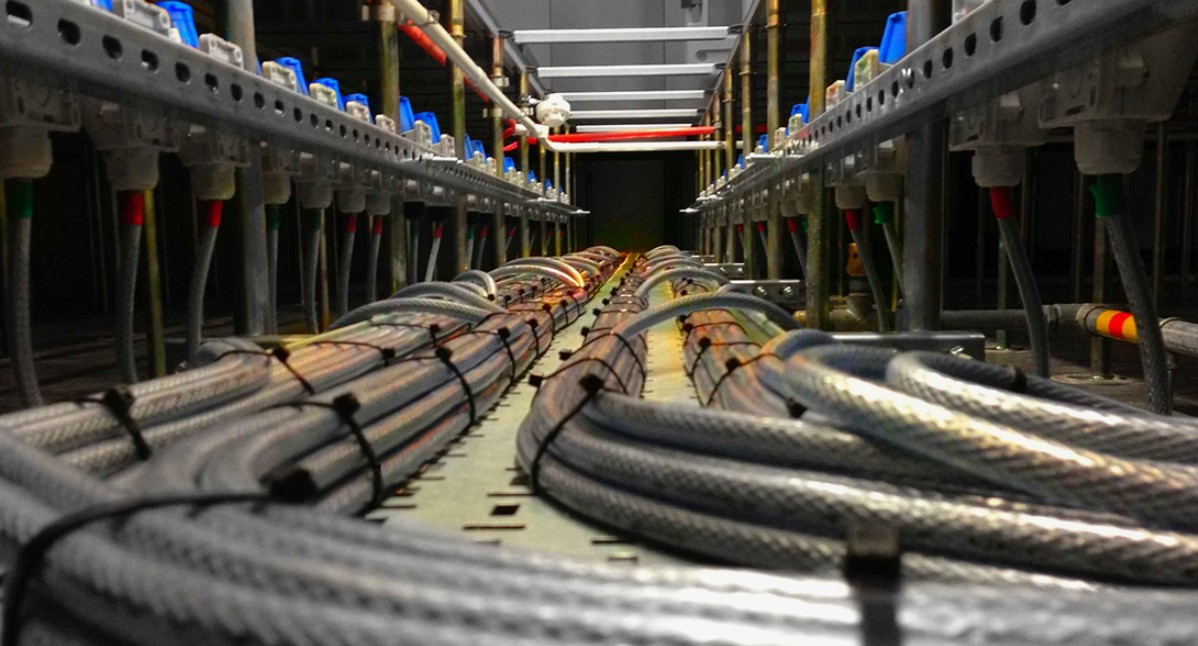Laying Cables and Wires: A Comprehensive Guide

Cable laying is a fundamental process in building the infrastructure necessary for transmitting information, powering devices, and ensuring seamless communication systems. It involves laying a network of cables and wires for electricity, light, sound, and data transmission. Proper cable installation requires specific knowledge, careful planning, specialized tools, and accessories, such as cable trays, cable tray accessories, and fastening materials. The process also takes into account several key factors, including the type of cable, environmental conditions, and the distance the cable needs to cover. Any error in the installation process can lead to system failures, poor bandwidth, or even dangerous situations like electric shock or fire.
Types of Cables and Their Applications
Cables can be classified into different types based on their functional purpose. Each cable type serves a unique role in electrical and communication systems, making it essential to choose the correct cable for the task at hand.
- Power Cables: Power cables consist of one or more conductors housed within a sealed sheath. These cables are commonly used in industrial settings, residential complexes, nuclear power stations, and more. Power cables are designed to carry three-phase current with voltage levels of up to 35 kV. Due to their high capacity, they are vital for large-scale energy transmission, and they also support services like internet and telephone line installations.
- Installation Cables: Installation cables are insulated wires primarily used for electrical wiring in homes and buildings. These cables can be single-core or multi-core, with a cross-section size ranging from 0.05 to 6 square millimeters. Installation cables are ideal for low-current applications, making them perfect for daily household use, such as powering lights and small appliances.
- Signal Cables: Signal cables are designed to transmit electricity to specific consumers, making them essential for applications like alarm systems and sound transmission. They are typically used in settings that require the transmission of data, alarms, or communication signals, such as in security systems or communication networks.

The Cable Laying Process: Planning and Preparation
Laying cables and wires is a multi-step process that requires precision and planning. The first step in any installation project is a preliminary analysis. This analysis helps determine the method of cable laying, which is chosen based on the operating environment and the type of cable being used. The analysis also considers other factors, such as the distance the cables need to cover, the potential challenges of the installation site (such as the need to cross obstacles or work at height), and the equipment required.
Once the analysis is complete, the next step is route planning. This involves mapping out the path the cables will take, ensuring the route is both efficient and safe. The cables must avoid potential hazards like water, high temperatures, and areas prone to physical damage. Proper route planning ensures minimal interference with other systems and makes future maintenance easier.
After planning, the installer needs to prepare the necessary tools and installation accessories. These tools include cable trays, plastic clamps, steel strips, and fastening materials to secure the cables along their designated path. Only once everything is planned and ready can the actual installation work begin.
Methods of Cable Laying
The method chosen for laying cables depends on the environment, cable type, and the level of protection needed. There are several methods for laying cables indoors and outdoors, each offering unique advantages in terms of safety, protection, and ease of access.
Indoor Cable Laying Methods
- Open Laying (Without Fastening): Open laying is the simplest method of cable installation, allowing flexible cables in a common sheath to be laid without any fastening. This method is generally used in environments where cables do not require protection from environmental factors like dust, heat, or moisture. While it’s an easy and quick method, it is not suitable for all types of cables, especially in areas with significant environmental challenges or high traffic.
- In a Corrugated Pipe: Laying cables inside corrugated pipes provides added protection from physical damage, moisture, and temperature fluctuations. The flexibility of corrugated pipes allows them to be used in tight spaces and along complex routes. This method is ideal for environments that require additional cable protection, such as in walls or ceilings.
- In Bundles: Cables can be grouped and laid in bundles, reducing the space they occupy and making installation more organized. Bundling is particularly useful when laying multiple cables of the same type or cables that serve similar functions.
- In a Tray: Cable trays are often used to support and organize cables in industrial and commercial settings. They provide a structured pathway for the cables, preventing them from sagging and ensuring they remain protected from dust and debris. Trays also make it easier to add or remove cables in the future, enhancing flexibility for maintenance and upgrades.
- In Boxes: Enclosing cables in boxes offers a high level of protection from physical damage, dust, and water. Boxes are commonly used in industrial settings, where external factors like moisture or chemicals could damage exposed cables. They provide a clean, organized appearance, ensuring that cables are safely contained.
Closed Cable Laying Methods
In environments where aesthetic considerations or added protection are a priority, cables are often laid using closed methods. These methods conceal cables within walls, floors, or ceilings, keeping them hidden from view while ensuring safety and organization.
- In a Groove: This method involves cutting grooves into walls or floors and embedding the cables within. Once the cables are laid, the groove is sealed, offering a clean, invisible installation. This is a common method for residential and commercial buildings where visible cables would be unsightly.
- In a Metal Sleeve: Metal sleeves provide robust protection against mechanical damage, electromagnetic interference, and fire hazards. This method is ideal for high-risk environments, such as industrial settings or areas with heavy machinery.
- In Floor Screeds: Embedding cables within the floor offers both protection and concealment. This method is often used in commercial buildings where there is a high volume of foot traffic, and exposed cables could become a tripping hazard.
- In Skirting Boards: Skirting boards are specially designed to conceal cables, providing a clean and organized look without the need for major construction. This method is ideal for offices and homes where exposed cables would interfere with the room’s aesthetics.
- In the Ceiling: Ceiling cable installation is common in commercial buildings and large office spaces. The cables are run through ceiling spaces, keeping them out of view while providing easy access for future maintenance.
The primary advantages of the closed cable laying method are the complete concealment of power lines and minimal visibility of sockets or cable pathways. This creates a clean, organized look, which is especially important in modern office spaces, homes, and commercial buildings. However, the main disadvantage of closed installation is that it can be difficult to locate or repair cables without a wiring diagram. Expanding or modifying old cable lines can also be challenging, particularly if they are embedded within walls or floors.

Outdoor Cable Laying Methods
For outdoor installations, cables need additional protection from environmental factors like moisture, temperature fluctuations, and physical damage. Various methods are used to lay cables outdoors, each providing a different level of protection and ease of access.
- In Trenches: Cables laid in trenches are buried underground, providing protection from environmental factors like rain, snow, and temperature changes. This method is widely used for long-distance cable installations, particularly for power and communication lines in rural or suburban areas.
- In Pipes: Laying cables in pipes offers an additional layer of protection, particularly from water, pests, and physical damage. This method is commonly used in environments where cables need to be protected from moisture or mechanical impact, such as under roads or along riverbeds.
- In a Channel: Cable channels are used to provide a structured pathway for outdoor cable installations, helping to organize and protect the cables from damage. Channels are often made from concrete or metal, providing a durable solution for long-term installations.
- In Blocks: Cable blocks are used to group multiple cables together, providing organized and protected pathways. This method is particularly useful for industrial or commercial environments where multiple cables need to be laid side by side.
- In Tunnels and Collectors: Tunnels and collectors are used to house large-scale cable networks, often in urban environments where underground space is at a premium. These provide easy access for maintenance while offering a high level of protection from environmental factors.
- In Trays and Boxes: Trays and boxes are also used outdoors to provide protection from physical damage and environmental factors. This method is ideal for exposed installations, where cables need to be accessible for maintenance but also protected from the elements.
Importance of Proper Cable Installation
Proper cable installation is crucial to ensure the safe and uninterrupted operation of any electrical system. Installation must comply with applicable standards and regulations to prevent hazards like electric shock, fire, and power failures. Correctly installed cables not only have a longer lifespan but also require less maintenance and are less prone to failures.
Furthermore, proper installation helps optimize the transmission of electricity and data, minimizing power losses and ensuring efficient system performance. This is particularly important in industrial and commercial settings, where even minor inefficiencies can lead to significant operational disruptions or financial losses.
Conclusion
Laying cables and wires is a complex yet vital process that forms the foundation of modern infrastructure, from power grids to communication networks. Whether installed indoors or outdoors, using open or closed methods, the key to successful cable installation lies in careful planning, appropriate cable selection, and adherence to safety standards. By following best practices and choosing the right installation method for each environment, professionals can ensure that cable networks are reliable, efficient, and safe for long-term use.


